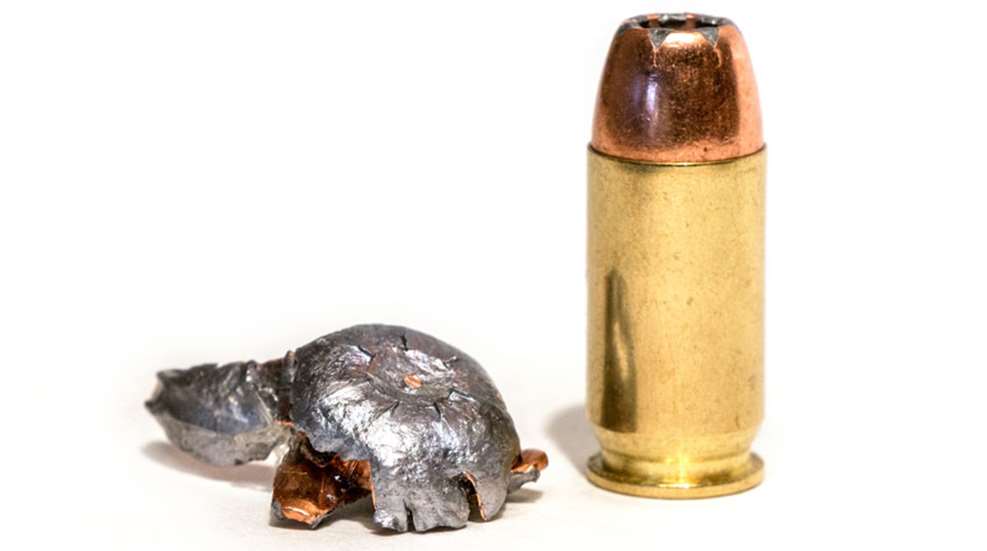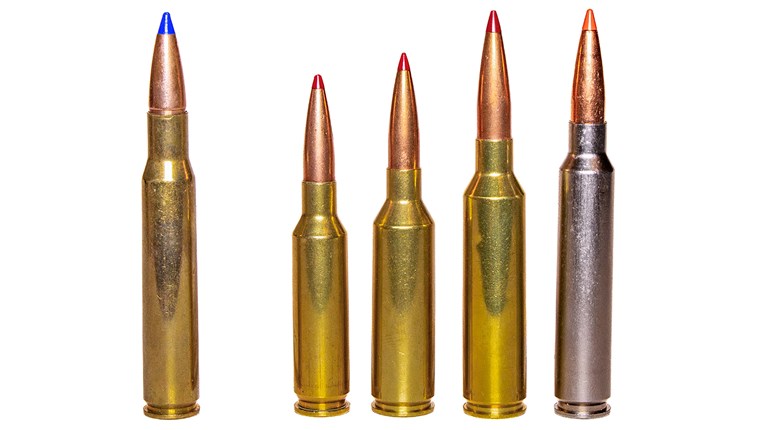
In the late 1980s, gunwriter Dean Grennell took .451 Detonics Mag. brass and trimmed it to the same overall length as the .45 ACP cartridge case, thus creating the .45 Super. Grennell wrote an article for the February 1988 issue of Gun World Magazine, discussing his new version of the .45 ACP, which was capable of pushing a 185-grain bullet to 1,300 fps. In the August 1988 issue of Gun World Magazine, a second article about the .45 Super—written by Tom Ferguson—appeared. Ferguson was interested in Grennell’s concept cartridge, but he wanted to take things a step further. He took a handful of .451 Detonics Mag. brass and a 1911 pistol to Ace Hindman of Ace Custom 45s. Hindman came up with the idea of heavier springs in the 1911 to make it more suited to the higher-pressure cartridge.
In 1994, Fernando Coelho—owner of Triton Cartridge—reached out to Garey Hindman, Ace’s son, who was still converting 1911s and even some Smith & Wesson Model 4506 pistols to accommodate the.45 Super. The problem with the cartridge was a lack of suitable brass. Coelho had recently started Triton Cartridge and felt that with his background in load development, coupled with actual in-house pressure testing, he would be able to come up with reliable, factory-loaded, .45 Super ammunition. A deal was struck and Coelho reached out to Starline Brass to get the ball rolling. The folks at Starline worked with Coelho to establish correct internal case-wall dimensions, web-area thickness and overall hardness of the cartridge case.
But, just like the .300 BLK found fame because of its name, the.45 Super—as a commercial cartridge—was doomed because of what it was called. You see, when Ace Hindman passed away, his son trademarked “.45 Super.” When Triton made factory-loaded .45 Super ammo, Garey Hindman would get a royalty, which was something a bit unusual in the ammunition business. Because of this, no major firearm or ammunition manufacturer would offer .45 Super guns or ammunition. There was also the concern that a shooter might load and fire .45 Super ammo in a vintage .45 ACP revolver or an old 1911 and get an unpleasant surprise.
All this led to the birth of the .450 SMC. Coelho was fed up with the inherent issues of the .45 ACP/.45 Super cartridge case and the damage being done to the potential growth of the .45 Super. One of the case problems was primer flow; you could experiment with different brands of primers and powder, but most of the time primers would flow back around the tip of the firing pin. The solution: switch to a small-primer pocket and utilize a small-rifle primer. Coelho reached out to Starline again, asking the company to make .45 Super brass with a small-primer pocket. That solved the primer-flow problem and Triton Cartridge soon began offering factory-loaded .450 SMC ammunition. It was loaded to a maximum average pressure (MAP) of 32,000 psi, which is slightly higher than .45 Super pressures, but still less than the 37,500 psi pressure of the 10 mm. The new name—.450 SMC—solved the trade-mark problem, and Triton had two loads: a 165-grain bullet at 1,450 fps and a 230-grain bullet at 1,150 fps.
When Triton went out of business in 2003, it looked like the .450 SMC was doomed. But, another new ammunition company stepped up to offer one of the most potent and practical magnum-category, .45-caliber, defensive-handgun cartridges ever created. Mike McNett of DoubleTap Ammunition recognized the usefulness of the .450 SMC and his Cedar City, UT-based company now offers six .450 SMC loads.
Comparatively speaking, the hottest factory 185-grain .45 ACP load you can buy will generate only about 1,140 fps, and the fastest 230-grain offering only about 1,000 fps. Essentially, what you get with the .450 SMC are 10 mm velocities with a .45-caliber instead of a .40-caliber bullet.
Of course, since no one is manufacturing .450 SMC handguns, what you’re probably wondering is what you have to do to shoot .450 SMC in your .45 ACP. Well, a .450 SMC cartridge can be fired in any .45 ACP handgun. However—and this is a big however—it should only be fired in full-size .45 ACP handguns that have a +P rating. (A 20- to 22-pound recoil spring in your favorite 5-inch 1911, or a 21- to 23-pound spring in a Glock.)
When compared to the .45 ACP, the upside of the .450 SMC should be obvious. The increase in velocity will increase the volume of the wound cavity of any expanding or flat-point bullet, and with non-expanding bullets you’ll see more penetration. But, as with everything in life, there’s always a trade-off. With more power out the front comes more recoil out the back. Newton taught us this with his third law more than 300 years ago. A 230-grain load fired from the .450 SMC cartridge out of a 5-inch 1911 will generate about 78 percent more recoil than a 230-grain load fired from a .45 ACP.





































